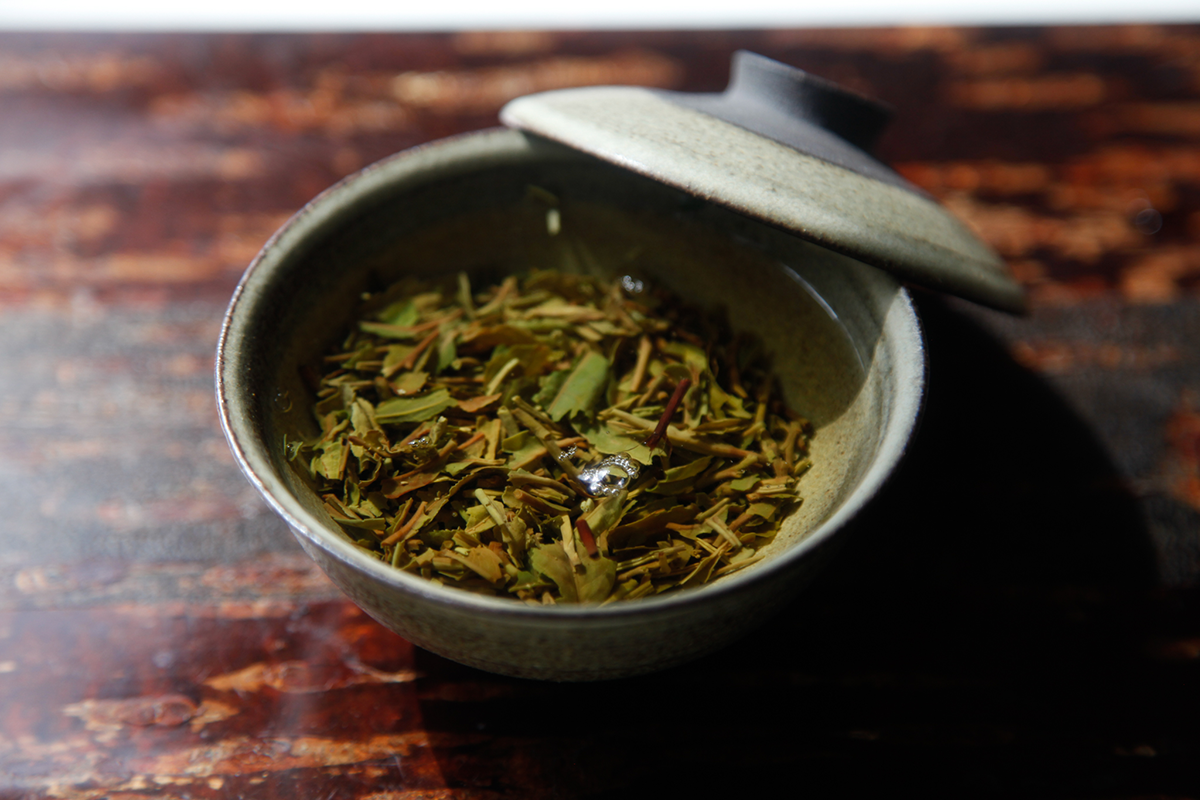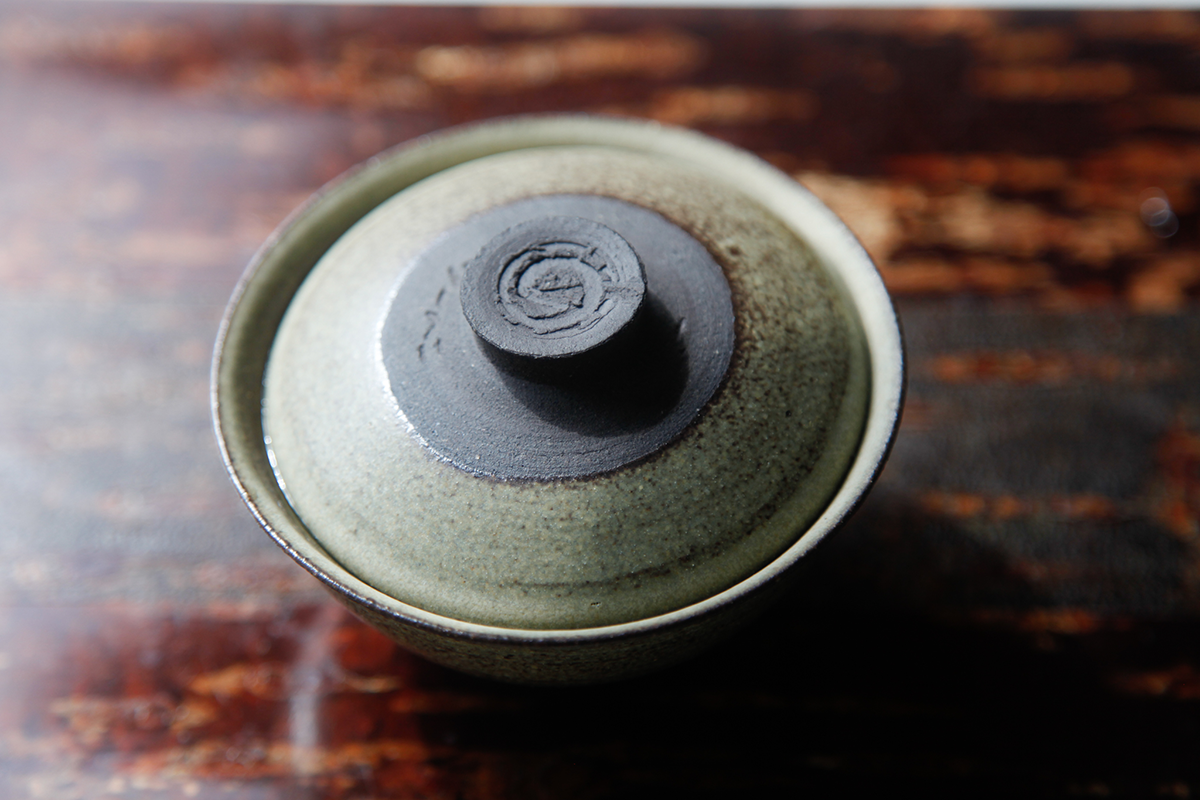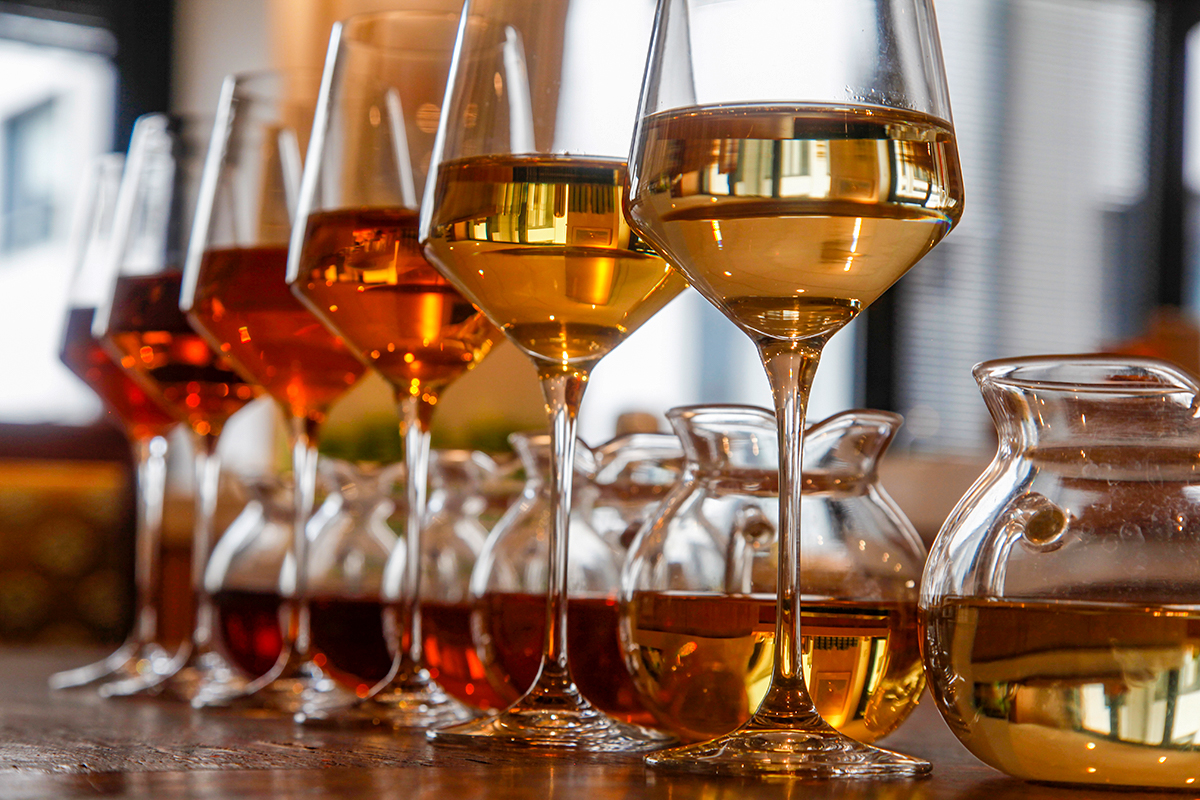One of the things you notice when you visit tea farms in Japan, going from factory to factory, is the age of the farmers. Often these couples represent the fourth, fifth, even sixth generation of tea producers in their family, but when you ask them about the next generation, there’s often no one left to take over. They have few or no children, and the latter are rarely inclined to carry on the family tradition. It’s a huge challenge for tea production in Japan. Of course, the land won’t disappear and the tea bushes probably won’t either: the fields will be taken over by a big tea company. But this mosaic of small producers, who farm an average of around 12 acres, contributes to the rich diversity of tea, as they all work with their preferred cultivars and the plants that are best suited to their terroir. I think it’s important to buy from them for as long as possible, to give the next generation every chance.
Emotions
A very classy tea
In Britain, tea is a ritual, or rather, rituals. There is breakfast tea to start the day, and later on, the much-loved tradition of afternoon tea. The latter is more of a meal than a beverage: the tea itself is important, but even more so is the setting, the quality of the china, and the accompanying cucumber sandwiches, cakes and scones with jam and whipped cream. The Duchess of Bedford started this tradition at the beginning of the nineteenth century. In those days, people ate their lunch early and their evening meal late, and the Duchess grew hungry later in the day. She began to ask for food to be served with her cup of tea in the afternoon. This soon turned into a sophisticated social occasion, a tradition that lives on across the country. Afternoon tea at one of London’s prestigious addresses will satisfy even the biggest appetites in the most refined surroundings complemented by discreet service. It is a social ritual of etiquette. A very classy tea indeed.
Live free!
The gaiwan works as follows: after placing a large quantity of leaves in it, equivalent to around a third of its volume, the water is poured in. The first – short – infusion is poured into a “fairness cup” or directly into the drinking cups, and is followed by a second and then a third infusion.
The leaves are completely free during this series of brief infusions. Watch them unfurl. They are at home in water. Have you ever looked at tea leaves as they infuse? Have you ever seen them so relaxed? The gaiwan is not just a vessel for brewing tea, it’s a spectacle in itself. The object is beautiful, and the leaves inside are beautiful as they infuse. When we gently lift the lid, we can admire their colour, their shape, the way the water brings them back to life. And, of course, we can appreciate the aromas that emanate from them, which we can smell by lifting the inside of the lid to our nose.
The simplicity of the gaiwan
Apart from the tasting set, which is sometimes used by professionals, there are different ways of brewing tea. In China there is the zhong or gaiwan; in Japan the shiboridashi or kyusu. In the West, the most commonly used vessel is the teapot. But why not explore lesser known objects? Today, I would like to talk to you about the gaiwan. It’s a very simple thing, consisting of a kind of bowl with a lid. Let’s take a look at it from the outside while the tea is brewing inside. The beauty of the gaiwan lies in its radical simplicity. What is the principle of brewing tea? It involves bringing the tea leaves into contact with water. As the leaves unfurl, they release their aromas and other elements. I can’t think of a better place to brew tea leaves than in this remarkable object. I could show you the inside of the gaiwan right now, but I’d rather wait. What I enjoy most while my tea is brewing is appreciating the vessel in which it’s brewing: its colour, the way the changing light plays on its surface, its material. I observe the roughness of the clay and my contemplation transports me to distant landscapes. This gaiwan was made in the Périgord region of France by a talented ceramist, Manon Clouzeau. Let’s have another look at our tea brewing under this delicate lid, which is so easy to hold. I’ll leave you to look at it and will see you soon. Next week, I’ll take the lid off.
Pairing tea with savoury food
The French TV channel M6 came to see me this week to ask me about tea and food pairings; more specifically, savoury food. Tea is an ideal partner for something sweet like cakes or biscuits – think of that quintessential English tradition of afternoon tea. It’s a different matter, and perhaps more challenging, when it comes to savoury foods. My first recommendation for those who want to try it is to serve the tea at room temperature. With the right selection, tea can go well with, say, cured meats or cheeses, but it’s best to avoid pairing hot with cold. So here’s what you do. Take the tea of your choice, add the usual amount of tea leaves to a jug or carafe and pour over filtered water at room temperature, then leave it to brew for an hour. From left to right: Pu Erh Impérial (pair with a mature Comté), Bancha Hojicha (pair with a Brie), Shiraore Kuki Hojicha (pair with a Pont-l’évêque), Butterfly of Taiwan (pair with an Ossau-Iraty), Dharamsala Smoked (pair with a smoked cheese or cured meat), and Chine Long Jing (pair with a fresh goat’s cheese). Bon appétit!
To be human
In Nepal, it is not the year 2023 but 2078, until April. Just a few days before the New Year, I was lucky enough to watch the sacred dances at Shechen monastery. Behind the scenes, the monks get ready. They each put on their costume. The boy plays the role of the jester. He and his companions will entertain the spectators and play tricks on them between dances. These atsaras remind us of our human condition. To be human: that is all I wish for us at the start of this new year.
Making a better living
In the centre of the island of Java, this farmer is pulling up tea bushes which are no longer profitable. He is going to replace them by market gardening. Why can’t he make a living from tea? Because he only sells the leaves rather than a finished product. He does not process the leaves himself; he was never taught to do so. He has always picked the leaves from the bushes and sold his fresh harvest immediately.
This is a major challenge for any self-respecting tea sourcer. How can we ensure that a farmer never has to get rid of his tea plants? How can we help him acquire the skills to make a living from his work? How can we help him to produce delicious teas with high added value? We try to answer these questions as best we can, first of all by visiting the farmers, which is of course an essential step. By talking and tasting, and through demonstrations and sharing information between villagers. Last but not least, by being ready to make a generous offer as soon as the farmer produces a good tea.
Finding salt on the tea route
It is not only in Tibet and the Himalayas that the tea route crosses the salt route. When you travel from Cuzco to the Peruvian Amazon, where tea is grown, you pass close to Maras, a village famous for its salt ponds. Thousands of years ago, these mountains were submerged under the sea. These days, salty water pours from a spring and fills the small pools.
Omar Syariff
This is Omar Syariff, who is closely involved in the production of quality tea in Central Java (Indonesia); more specifically, on the Dieng Plateau. He dedicates his time and energy to helping farmers who grow this plant. He seeks out the most hardy cultivars for them; he helps them to develop production from old tea bushes that will be harvested to benefit the local community. When I ask Omar what he is passionate about in life, he says, “Sharing knowledge. Sharing experiences.” And when I ask him what he would like me to say about him here, he replies modestly: “I’m just a simple man who knows how to make good tea.”
The people of tea
Tea is not just about landscapes, however beautiful they may be; it is not just about the plants or the leaves. Above all it is about the men and women who harvest, handle, analyse and select it. From Harendong to Semarang via the Bandung Research Centre, here are a few people who, in one way or another, make their living from tea or simply enjoy drinking it.




